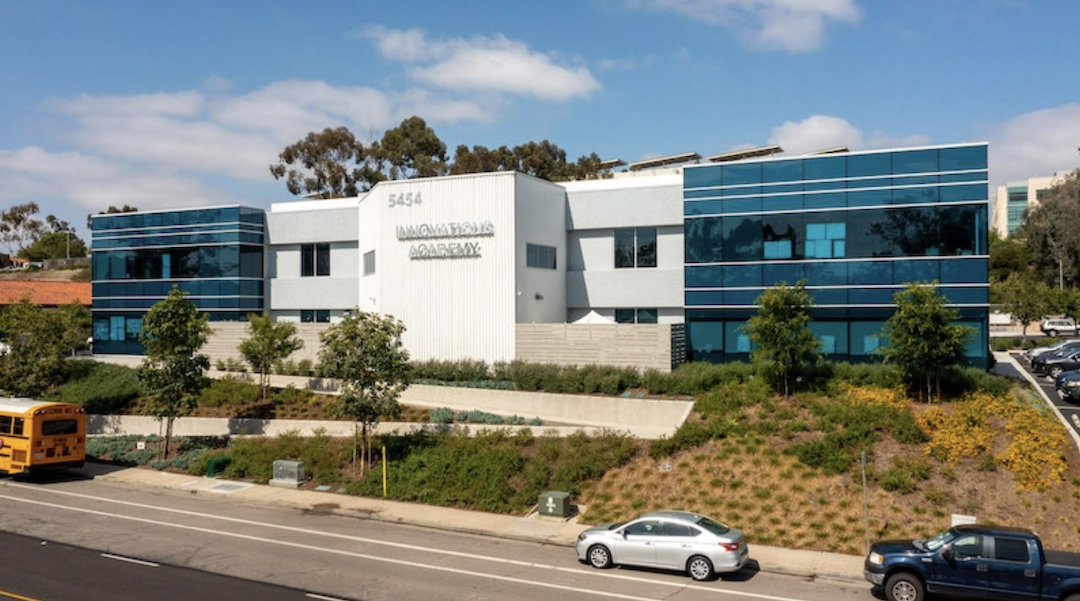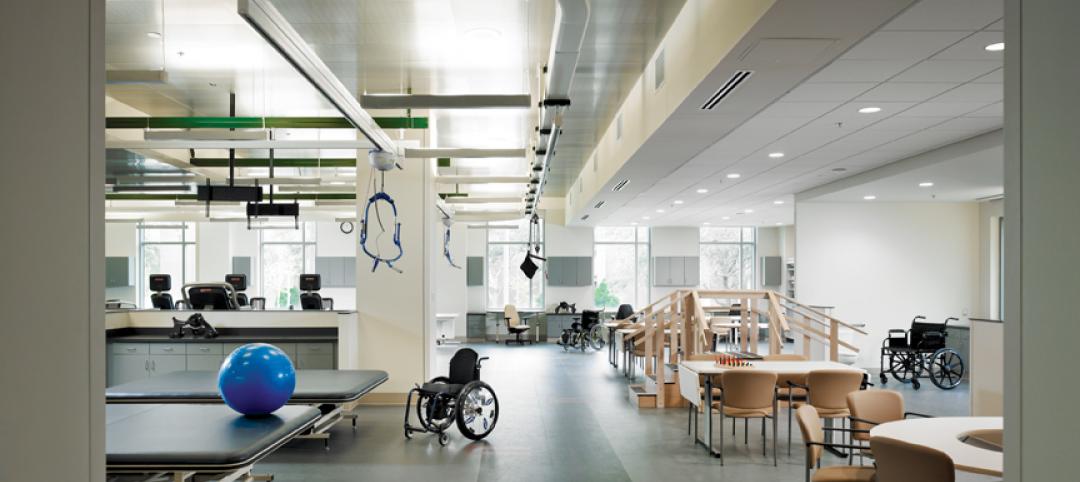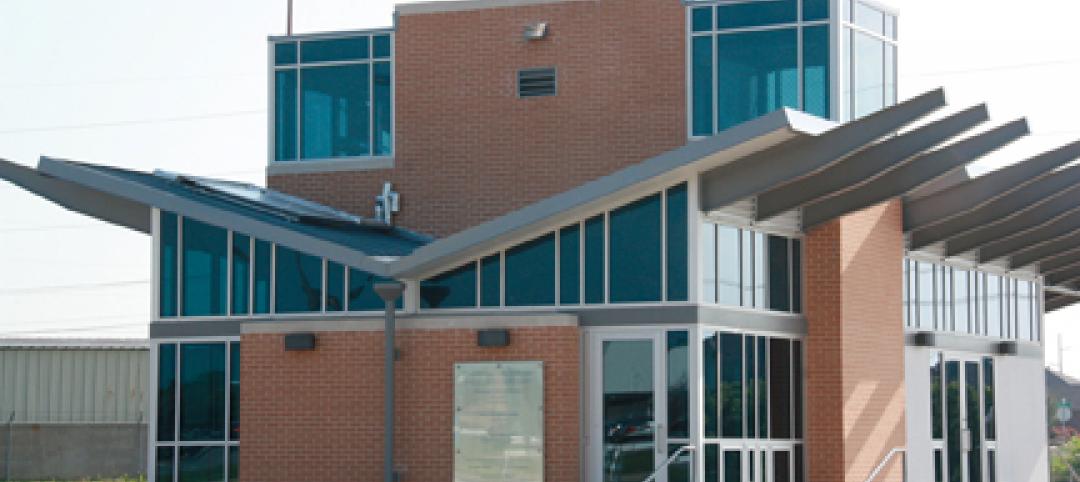The general contractor Balfour Beatty has been working with the San Diego Unified School District for 13 years. Over the past five years alone, the firm has completed five projects for the District, with number six currently under construction.
On all improvement and construction projects, the District has a mandatory goal of 50% participation by emerging business enterprises, or EBEs. That goal includes 5% for disabled veteran business enterprises (DVBEs).
For the District’s recent $38 million project that modernized its Innovations Academy, a K-8 charter school with nearly 400 students, Balfour Beatty delivered more than 62,000 sf of educational space within a tight five-month schedule. The contractor awarded $5 million in contracts, nearly 13%, to local DVBE firms, a portion that more than doubled the District’s participation goal for DVBEs. “That was outstanding,” says Tim Berry, senior vice president and one of Balfour Beatty’s K-12 market leads in California, whom BD+C interviewed earlier this week.
In total, Balfour Beatty has awarded contracts to five San Diego-area DVBE firms—Audio Associates of San Diego, IO Environmental & Infrastructure, Penn Air Control, PN Supply, and Veterans Engineering Services—that have worked on 22 projects for the District.
A SKILLED LABOR POOL
At a time when the construction industry has struggled with shortages of skilled labor, tapping the veterans’ community for workers can fill gaps for firms like Balfour Beatty. These partnerships, the firm has stated, “bring a pool of talent that is rich in leadership and complex problem-solving skillsets.”
Berry notes that over the past two decades Balfour Beatty has done a lot of work for the federal government and the military. On such projects, the vast majority of the construction is typically performed by small-business enterprises. Over this period, Balfour Beatty itself has also hired lots of vets, and continues to have a proactive outreach and networking program, particularly in southern California where there’s a large military population.
Programs that encourage, or even mandate, the hiring of veteran-owned businesses “open the door for us,” says Mike Bilodeau, CEO of IO Environmental & Infrastructure, which he started in 2007. With four offices and 50 employees, the company has grown to where it is performing jobs nationally (it currently has projects underway in North Carolina, Utah, and at Fort Dix in New Jersey.)
The San Diego Unified School District is one of IO’s long-standing clients. Ever since the District moved its properties into lease-leaseback agreements, many of its building upgrades have been whole-school remodels. “It’s almost like a design-build situation,” says Bilodeau, who served in the Coast Guard, and was also an environmental specialist with the U.S. Army Corps of Engineers.
CONSISTENT CASHFLOW A MAJOR BENEFIT

The modernization of the Innovations Academy included 27 classrooms, the gym, exterior play area and parking facilities, according to ABBA Project Management.
For the Innovations Academy project, the scope of IO’s work consisted of landscaping, irrigation, and decomposed granite resurfacing. Dan Parker, IO’s operations manager (and a U.S. Air Force vet), lauds John Atherton, MEng, CCM, DBIA, LEED AP, Balfour Beatty’s project executive, for keeping the Innovations Academy job moving forward smoothly. (Berry notes that this project required modifying the existing building’s structural component with 30- to 50-ft-deep shoring.)
To achieve dynamic DVBE participation on a hard-bid project like this one, Balfour Beatty develops targeted bid packages during preconstruction. Oftentimes, DVBEs come in as second-tier trade partners, so it’s important for the contractor to establish clear participation goals for the entire supply chain.
As consistent cashflow is of critical importance to small businesses, Balfour Beatty makes a point of paying the DVBEs it hires on time and in full. It also works with these subs to expedite the hiring process. “It’s essential that the paperwork be filled out properly, especially when financing is an issue,” explains Berry.
Balfour Beatty’s involvement with DVBEs may be about giving back to the community, and providing equal opportunities to all subcontractor companies. But the firm’s motives aren’t entirely altruistic: Berry says these partnerships help the firm grow. And the presence of vets on the jobsite can lift up the entire team. “There’s no entitlement mentality with vets, no ‘I can’t.’ ”
Related Stories
| May 7, 2012
2012 BUILDING TEAM AWARDS: TD Ameritrade Park
The new stadium for the College World Series in Omaha combines big-league amenities within a traditional minor league atmosphere.
| May 7, 2012
2012 BUILDING TEAM AWARDS: Fort Belvoir Community Hospital
A new military hospital invokes evidence-based design to create a LEED-certified facility for the nation’s soldiers and their families.
| May 7, 2012
2012 BUILDING TEAM AWARDS: Audie L. Murphy VA Hospital
How a Building Team created a high-tech rehabilitation center for wounded veterans of the conflicts in Iraq and Afghanistan.
| May 3, 2012
2012 BUILDING TEAM AWARDS: Rush University Medical Center
This fully integrated Building Team opted for a multi-prime contracting strategy to keep construction going on Chicago’s Rush University Medical Center, despite the economic meltdown.
| May 3, 2012
U of Michigan team looking to create highly efficient building envelope designs
The system combines the use of sensors, novel construction materials, and utility control software in an effort to create technology capable of reducing a building’s carbon footprint.
| May 3, 2012
Best commercial modular buildings and marketing programs recognized
Judges scored entries on architectural excellence, technical innovation, cost effectiveness, energy efficiency, and calendar days to complete.
| May 3, 2012
Zero Energy Research Lab opens at North Texas
The living lab—the only one of its kind in Texas—is designed to test various technologies and systems in order to achieve a net-zero consumption of energy.
| May 3, 2012
NSF publishes ANSI standard evaluating the sustainability of single ply roofing membranes
New NSF Standard provides manufacturers, specifiers and building industry with verifiable, objective criteria to identify sustainable roofing products.
| May 3, 2012
Gilbane to provide CM services for North Reading’s integrated middle/high school
The project scope includes a wastewater treatment plant, demolition of the existing high school and extensive athletic fieldwork.














